As the Moselle flows through Germany, its geography changes. Three designated sections: the Upper Moselle which flows from the French border to fabulous Roman-era Trier; the Middle Moselle; and finally, the Lower, or Terraced Moselle which goes from Zell to the mouth of the river at Koblenz; are quite distinct.
The Moselle begins quite gently, and gradually roughens, sharpening its curves on the unyielding slate hills. By the Lower Moselle, slopes become steeper, rock predominates, and the river forms several of its most backbreaking oxbows between Briedel, Zell and Cochem. Here, to maximize vineyard space, vintners must build terraces.
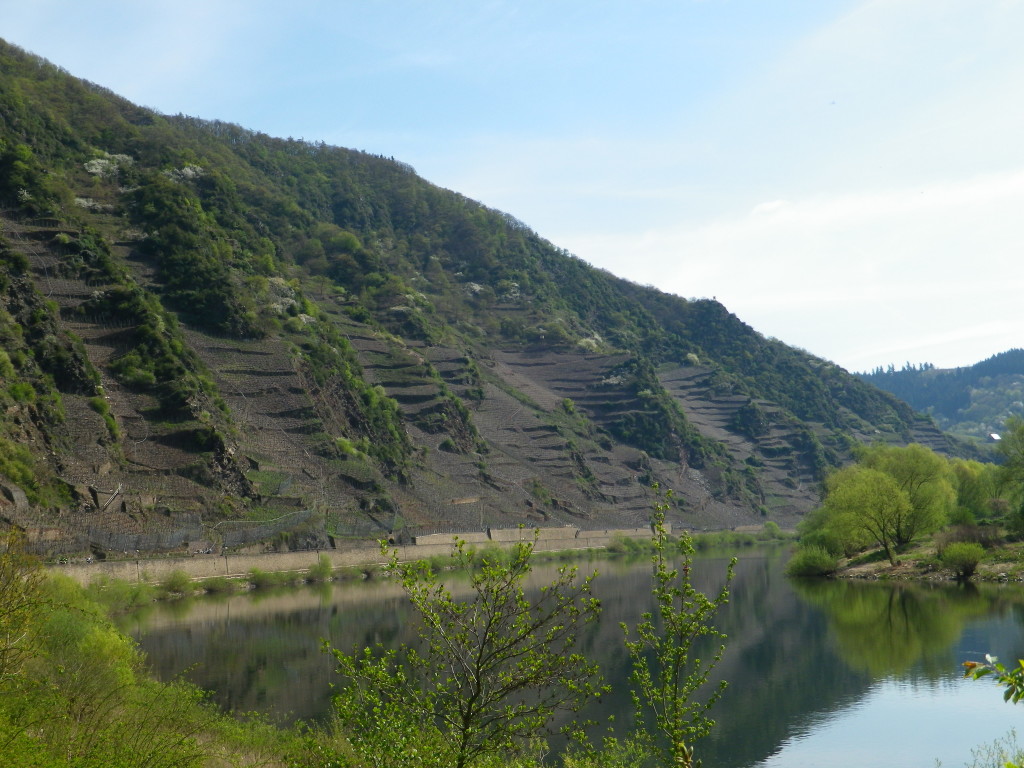
I began the second half of my Moselle ride just upriver of Zell. (See Part I. ) Leaving Puenderich and peaceful Briedel, I biked downriver to Zell, the small wine town of the black cat fame. According to legend, a black cat’s leap upon a wine cask indicated that it contained the best wine. Hence some visiting wine merchants of the day bought it all, ensuring financial success for the vintners.
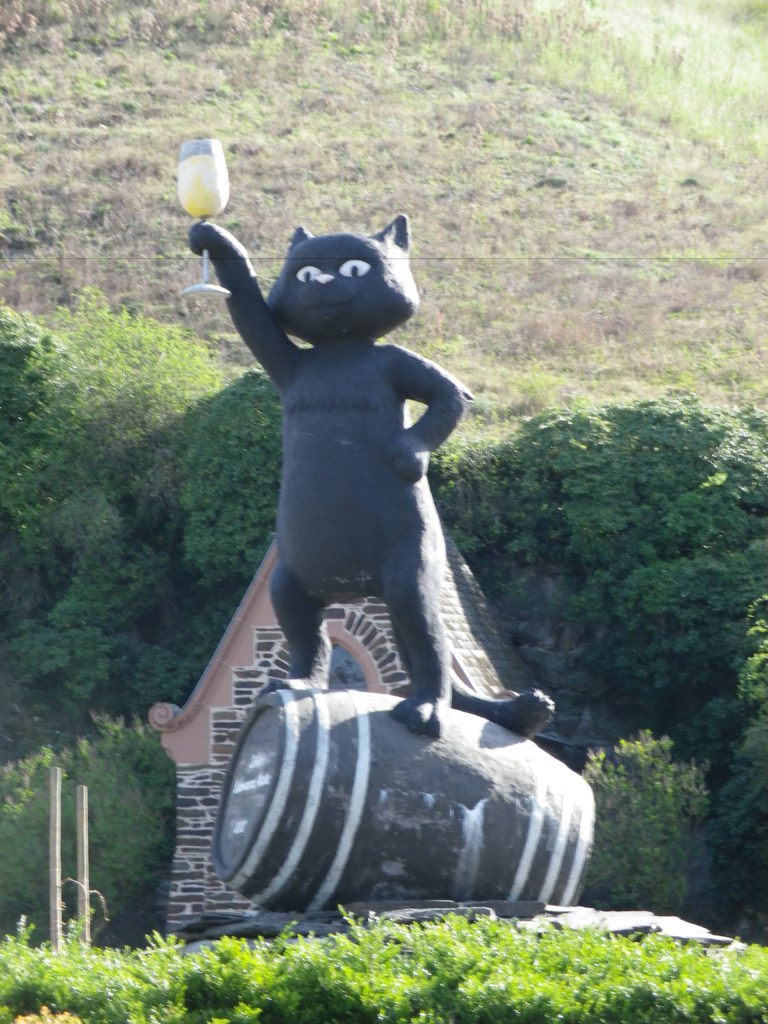
What is more grounded in fact is that this section of the Moselle is where more terraces are found, on slopes that become increasingly steeper. Just after the village of Neef, crossing the river to the left bank just upriver of yet another tremendous oxbow, there is the village of Bremm and the steepest vineyard in Europe. Known as the Calmont, it towers above the river, laden with compact, terraced plots. All arable sections of this massive slope contain terraces with vines, some ranged neatly, others higgledy-piggledy, following the dictates of this seemingly vertical terrain. Riding on the trail directly beneath the Calmont, provides an opportunity to observe the steep incline up close, while leisurely pedaling along the riverbank.
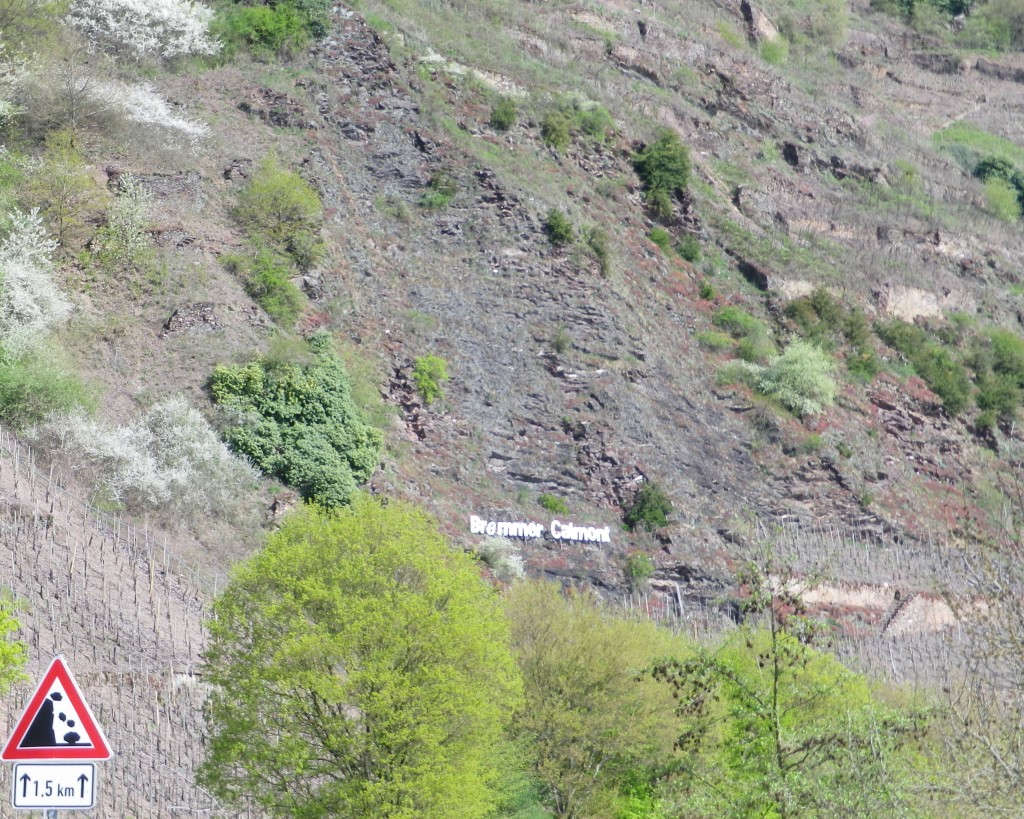
At Senhals, the trail jumped back across the river. It would stay on the right bank for the rest of my ride. The landscape becomes more dramatic. Centuries ago, some of these dramatic heights were transformed into castle-strongholds. Shortly after Senhals, Burg Metternich came suddenly into view. Set in the popular (but not terribly busy) village of Beilstein, it would have struck fear in the hearts of river men, plying goods, probably wine, up and down the river.
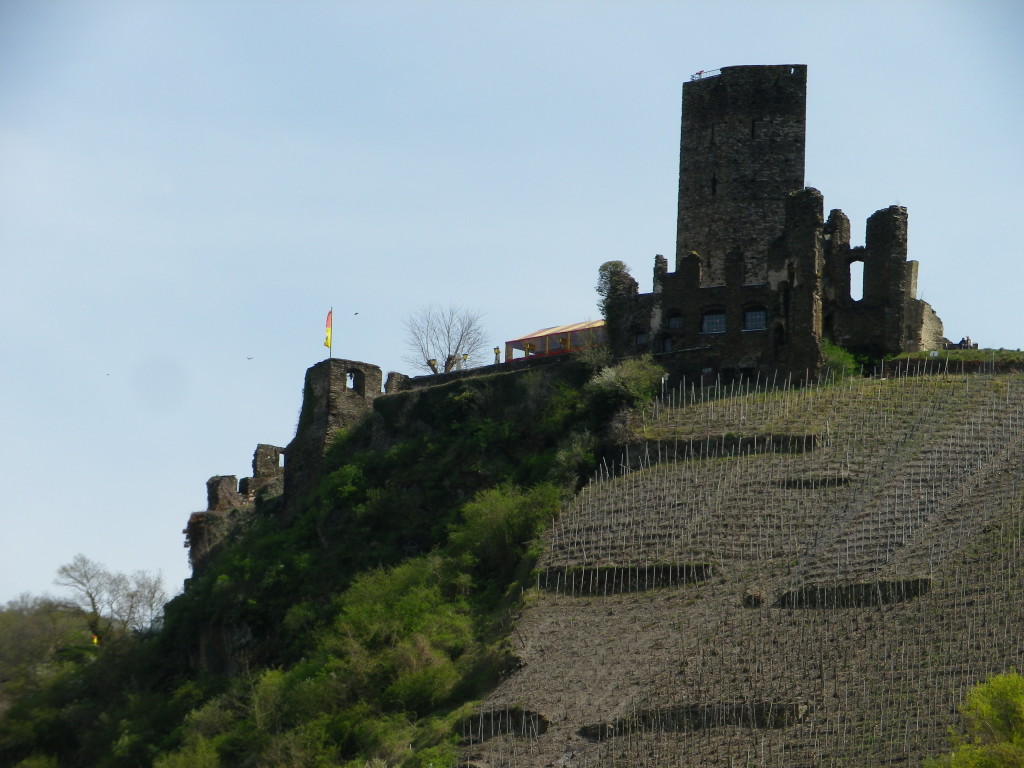
Shortly after passing by the lively village of Valwig, the most breath-taking scene of them all came into view. Suddenly rounding a corner, the gloriously medieval-looking Reichsburg castle loomed above the town of Cochem. I had been expecting it, and knew what it looked like from previous visits, but I hadn’t expected such an impressive perspective of it from this side of the river. The photo opportunities piled on as the trail continued onto Cond, just opposite Cochem, along a busy stretch of the river.
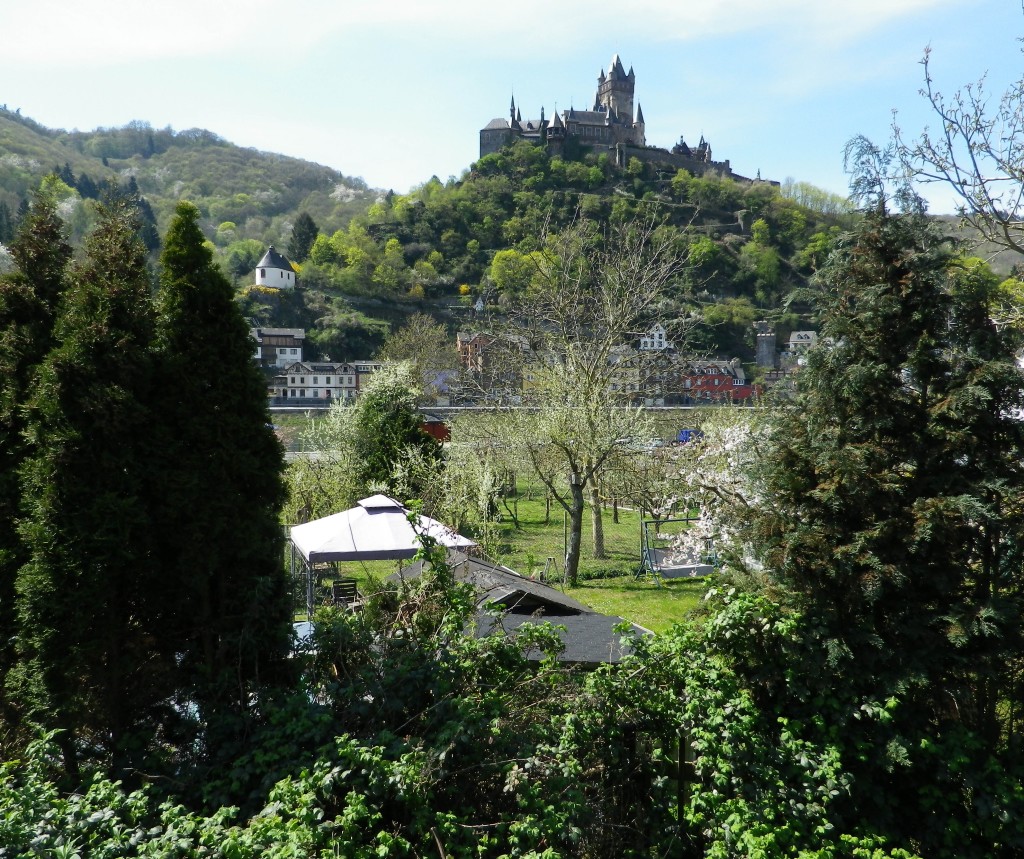
Cochem, like Bernkastel, is popular with visitors for several reasons: in addition to the marvelous castle with its great tours, there are charming old streets, half-timbered houses, and a nice walk around parts of the lower castle walls back into the town. But for now, I focused on buying some Riesling, and savoring my last moments on the Moselle Bike Trail in this beautiful, wine-famous part of the Moselle.
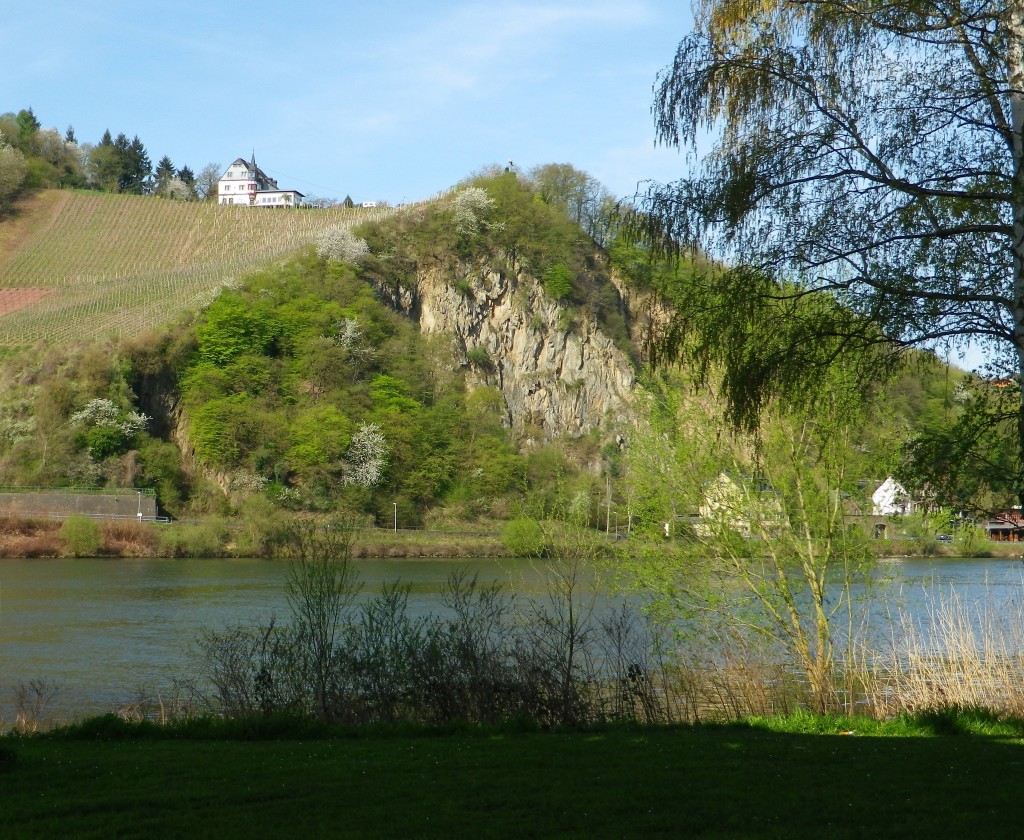
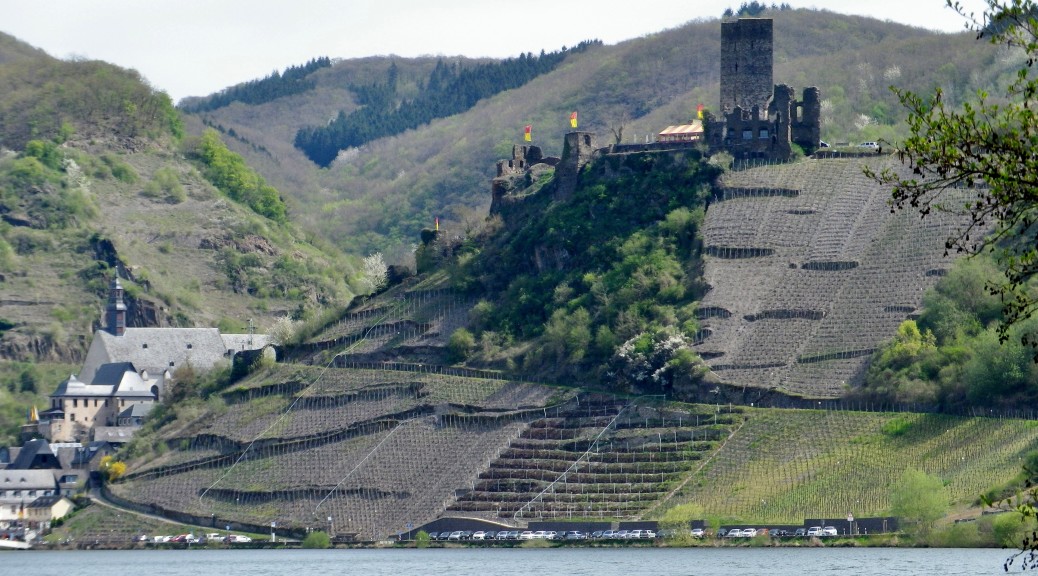
One thought on “Riding for Riesling, Part II”
Comments are closed.